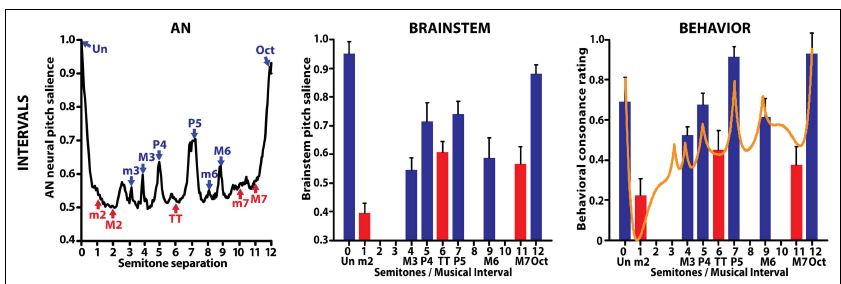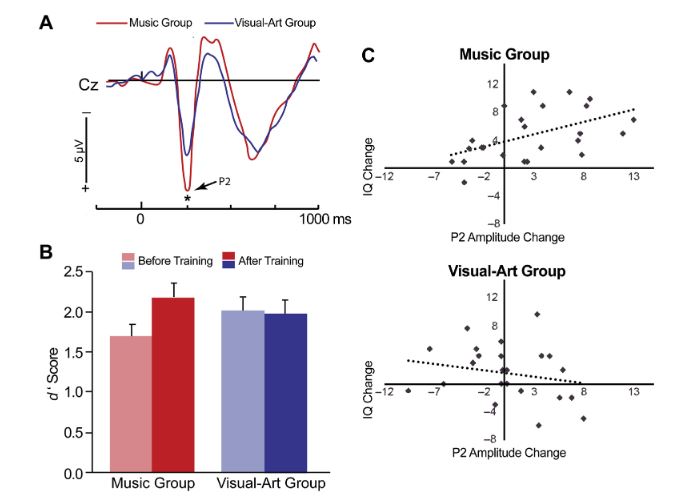|
kitarist -> RE: Picado Speed (Oct. 17 2022 19:41:57)
|
quote:
ORIGINAL: Piwin
I perused a bit of Miller's other writings, and why this is happening might be pretty simple: Miller was an early advocate of chunking models and the people who have started to revive that model for linguistic purposes in the last decade or so likely got some of their ideas from him. See for instance Miller's 1956 address "The magical number seven, plus or minus two" (doi:10.1037/h0043158).
Oy, I’ve heard that number seven thing as well. So Miller was the offender. [:D]
Also, thank you for the Shakti reference.
quote:
1. The 10 value derived from Miller is irrelevant for picado, however the notion of interpreting individual bursts as discrete auditory events is not. Miller's study assumes equal time for noise and silence within a single pulse. That's what makes it irrelevant for us because we can toggle that ratio. For me the notion of each note being a discrete auditory event, with a beginning, a sound, followed by relative silence, is one of the key features of picado. The faster you go, the shorter each total pulse needs to be, but the silence portion of the pulse needs to remain, otherwise it won't be perceived as proper picado. We're back to the same old advice: practice staccato! [:D] There could potentially be some kind of limit where the difference between picado and not-picado starts to blur, either because we're reached some physical limits in the production of staccato, which I assume is more demanding in movement than whatever the opposite of staccato is called, or because the silence portion of the pulse has become just too short to make any real difference (where you'd have to look at the decay of the sound waves staccato vs not staccato, taking into account at which point we cease to be able to perceive the difference (with perhaps a parallel to the 0.4 db mentioned by Miller).
In the context of guitar and picado there are also other factors that seem relevant. One, the plucked note has a definite beginning and decay just from the nature of the guitar as a resonator and the method of making the sound. Two, the pulse nature needed for a crisp fast picado is to me more about the muscle force applied (I.e. the input). Since the 0.4dB threshold for decay means something like 2000 strokes/second, we seem to be, with the guitar and picado, in a safe region in terms of the output characteristics (produced sound).
I am not saying staccato practice is therefore not applicable – it is, but I think of it as training the brain to produce as narrow, crisp, and synced a pulse of muscle force (i.e. input) as possible for each stroke; the output (the sound produced) is a consequence of that.
quote:
As a side note, this aspect of it makes me even more baffled at why this is used for linguistics, the more I think of it. Language is not "played staccato". Even at very slow speeds you just don't have "discrete auditory events" that way. It is much more fluid than what Miller's study is looking at, so I don't really get what the parallel is supposed to be. If I find the time, I might write a few of these researchers to ask what their reasoning is.
Yes, please, that would be great! I also don’t understand it. Also, at the back of my mind I am a tiny bit worried about quoting these specific numbers (0.4 dB; 60-65 ms decay-to-silence for neural input, etc.) from 1948; ideally I’d like to verify through recent papers that the numbers held up.
One thing that may be of interest - a 2020 review paper by, among others, your favourite author M. Christiansen [:D] called "Chunk‐based memory constraints on the cultural evolution of language" - https://onlinelibrary.wiley.com/doi/pdfdirect/10.1111/tops.12376
I haven't read it carefully yet, but you will probably get the salient points much faster anyway; interested to hear what you think of it.
quote:
2. The question of perceptual decay (which Miller sets at about 60-65ms), and the idea that there are limits to just how much information can be handled in short-term memory at any given moment still make for an interesting conundrum and would make chunking relevant in the musical context. The question of speed would then come up, not as a perceptual question of "can I distinguish this note from this other note", but more as "the signal is gone and my short-term memory is reaching its limit capacity". Something like that. I mean, even just to feel a groove, at any speed really, wouldn't memory have to play a role? How can I feel a groove if all traces from each beat disappear in 60-65ms? And if at higher speeds the amount of information exceeds the capacity of my short-term memory, how is that handled? That kind of question. But at this point I'm just spitballing. [8D]
This is a very interesting question indeed! I think I’ve seen papers taking about how the perception of a groove/rhythmic pattern is connected to short-term memory, and there was some number thrown around – like if the time between successive rhythmic events is more than 2 seconds, the [musically–untrained] brain loses the idea of perceiving a regular pulsed structure. There was some implication for the temporal length of one compass in flamenco, say – like if a siguiriyas tempo is too slow one starts losing track of where one is within the compass structure.
Pivoting a bit, here is a 2013 review article of recent work examining the psychophysiological bases of consonance, dissonance, and the hierarchical foundations of musical pitch: “The role of the auditory brainstem in processing musically relevant pitch” – full text from https://www.frontiersin.org/articles/10.3389/fpsyg.2013.00264/full
They show that the perception of harmonic intervals’ dissonance/consonance and even their hierarchical relationship is already present in brainstem (non-conscious; pre-attentive; precortical) response.

But they also show that the response is teachable – because musicians’ brainstems do better than non-musicians’ – the response is larger and more temporally precise.
So while they conclude that:
“..information relevant to musical consonance, dissonance, and scale pitch structure emerge well before cortical and attentional engagement. The close correspondence between subcortical brain representations and behavioral consonance rankings suggests that listeners’ judgments of pleasant- or unpleasant-sounding pitch relationships may, at least in part, be rooted in early, pre-attentive stages of the auditory system. Of the potential correlates of musical consonance described throughout history (e.g., acoustical ratios, cochlear roughness/beating, neural synchronicity), results suggest that the harmonicity of neural activity best predicts human judgments. Although enhanced with musical experience, these facets of musical pitch are encoded in non-musicians (and even non-human animals), implying that certain fundamental attributes of music listening exist in the absence of training, long-term enculturation, and memory/cognitive capacity. It is possible that the preponderance of consonant pitch relationships and choice of intervals, chords, and tuning used in modern compositional practice may have matured based on the general processing and constraints of the sensory auditory system.”
..it seems a bit like kicking the ball farther up field without answering the fundamental question of why these intervals are perceived that way; also it can’t be a completely innate ability since musical training improves the brainstem response; maybe the observed brainstem response in non-musicians is simply the result of passive/environmental “training” in the first 2-3 years of life?
Another review paper from 2014 is “Examining neural plasticity and cognitive benefit through the unique lens of musical training” - https://www.memphis.edu/acnl/publications/pdfs/hr2014b.pdf
From the abstract:
"Recent studies indicate that music training provides robust, long-lasting biological benefits to auditory function. Importantly, the behavioral advantages conferred by musical experience extend beyond simple enhancements to perceptual abilities and even impact non-auditory functions necessary for higher-order aspects of cognition (e.g., working memory, intelligence). Collectively, preliminary findings indicate that alternative forms of arts engagement (e.g., visual arts training) may not yield such widespread enhancements, suggesting that music expertise uniquely taps and refines a hierarchy of brain networks subserving a variety of auditory as well as domain-general cognitive mechanisms.”
!! Something for guitar and other music teachers to point to! [:D]

Images are resized automatically to a maximum width of 800px
|
|
|
|


